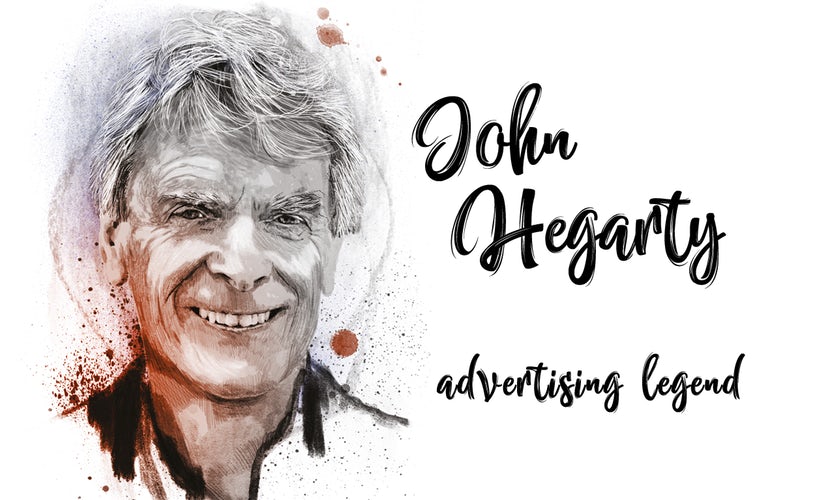Attributing results to particular channels or campaigns is arguably digital marketing’s most dogged problem, with an array of approaches mutating as platforms change. Here, The Drum Network experts’ quick tips.
Molly Deaville, Growth Director, Dept UK: “Measuring the impact of marketing investment is not a new challenge. There’s no silver bullet solution.
“For far too long, the digital industry has over-relied on attribution as a source of truth. Now data privacy has caught up with technology, and the industry is forced to find better (and more ethical) solutions to help us understand customer and their journeys, better than ever.
“My advice? Run a blended measurement approach, combining attribution with regular incrementality tests across paid and owned channels. Even better if you’re running marketing mix modelling (MMM) and brand studies too; these are often overlooked by digital-first brands. Build your results into a knowledge repository that can be used in planning cycles.
“Don’t just rely on media platforms to mark their homework. When did that become good practice?”
Matt Triggs, Head of Analysis & Modelling, Jaywing: “Attribution modelling has met criticism lately, particularly around its usefulness in measuring incrementality. The claim is that attribution models overestimate on low-funnel channels like PPC and underestimate the influence of upper-funnel or brand-led advertising. They also give little information about the incrementality of channels (as this would require a useful measure of baseline sales), which should be a measure of success.
“In some cases, especially rule-based approaches to attribution, this is undoubtedly correct. Simplified solutions like last-click, position-based or time-delay simply can’t factor in any baseline and are naïve in sharing credit between touchpoints. Modelled approaches using Markov Chains are more sophisticated when it comes to sharing credit, but still struggle with identifying a baseline (and so, incrementality).
“Jaywing’s approach of ‘exploding’ journeys into different combinations and using machine learning and AI to understand key drivers allows identification of a baseline and true, mathematical incrementality. Marketers should look to challenge their attribution providers to ensure that they’re measuring incrementality and providing the best illustration of the power of their marketing.”
Aaron Dicks, Technology Director, Impression: “It wouldn’t be a week in digital without a debate around the next step to take with digital attribution (whether or not we mention GA4). This is under constant review at Impression, and for good reason.
“Stitching together views and sessions for third-party ad platforms naturally falls into the purview of third-party cookies, which have been severely curtailed over recent years, and had their death sentence handed to them for 2024 when Chrome joins Safari and Firefox browsers in their removal.
“Advertisers have relied heavily on performance metrics from platforms that use this data for some time. In some ways, this has let us take our eyes off wider measures of success.
“For us, there are three areas of interest when it comes to attributing results and setting budgets for the modern customer journey – which is multi-platform, multi-moment, and multi-device, and therefore impossible to track from the point-of-view of a third-party.
“Our team is currently appraising: media mix modelling, conversion modelling, and third-party all-in-one attribution platforms. Tools worth checking out include SegmentStream and Triple Whale, depending on your tech and ad stack, and your approach to attribution.”
Kevin Joyner, director of data strategy, Croud: “Our industry has a new-found respect for privacy choices, and a new-found… resignation when it comes to zealous, privacy-protecting browser and OS technologies. These disruptions have thrown conventional digital attribution out of the limelight and into an important, supporting role. The new magic word in measurement is ‘incrementality’. Deservedly so, but as causal inference and machine learning models grab our imagination, there’s a more old-fashioned phrase that mustn’t be forgotten: business impact.
“Machine learning-enabled automated budget optimization will be game-changing, for a business that’s ready to use it. Before commissioning your data science team, ask yourself: are we producing real analysis from the data we already have? Is it resulting in any meaningful action? We must deliver the analytics that will impact your business, even if it’s not yet the new solution our industry’s in love with.”
Harry Daniel, technical marketing strategist, Rawnet: “With the sunset of GA3, we now turn our full undivided attention to GA4 and data-driven attribution modelling as standard in Google Analytics. Data-driven attribution constantly updates how it understands conversion probabilities based on assessing how likely specific user paths are to lead to a conversion or an exit. Data-driven attribution modelling also compares user data to randomized control trials, allowing it to understand and better calculate the conversion probability of different user paths.
“It would be helpful to have visibility of these trials, and the conversion probabilities for different paths. This will improve how agencies report on specific user paths to clients, and give clarity to clients on what user journeys are more likely to drive conversions (and exactly why we use data-driven attribution modelling).”
Nick Elsom, Director, FourForty: “Attribution of what – directly measurable sales? Or maybe something a step removed; propensity, or awareness? And if our work doesn’t have influence over the whole journey, do we even want to ask too many questions? If it was clear-cut, we’d surely all be rushing for the payment-by-results door.
“Customer experience (CX) is about removing obstacles as much as creating demand, so start at the beginning, with a benchmark. The only benchmark that matters in measuring a great experience is: how near or far it is from your customers’ expectations? Without that, CX is just another name for what we do.
“Understanding expectations requires a shift away from total reliance on historic data to extrapolate a view of what customers will do. Demographic, behavioural, and attitudinal data is invaluable. We need to know who they are, what they did and possibly even why they did it. But knowing how your customers see their relationship with you in the future prevents CX being nothing more than a campaign looking for an objective.”
Ryan Green, senior vice-president of marketing and innovation, Coegi: “It’s not just GA4 that will upend your attribution models. The latest iOS17 update will reportedly strip link trackers from being passed through message, mail, and private browsing. It’s yet another action chipping away at the scale and effectiveness of last-click attribution and website analytics.
“We’ve been moving our clients towards incremental measurement for years, even before Facebook and Apple walled off their data. There wasn’t enough impression-level data to build an accurate model then; there certainly isn’t now.
“No single KPI can adequately identify success. Instead, we encourage every brand to develop a custom measurement framework, consisting of media data, business data, and advanced measurement studies – for example: lift in unaided brand awareness (45%) + location visits (20%) + clicks (10%) + sales (25%) = brand health score.
“Let’s start leveraging custom scoring models to evaluate leading indicators of success that are predictive and driving smart optimizations.”
Betsy Ray, director of marketing analytics, Kepler: “With Google’s impending cookie deprecation and the loss of UTM tracking coming with Apple’s iOS 17, it’s long past time for advertisers to move away from cookie-based and last-click attribution. There may be companies offering ‘silver bullet’ software, but most of these are just technical workarounds that may not pass a data privacy sniff-test.
“Rather than investing in short-term ‘hacks’, brands should commit to robust, future-proofed methodologies like marketing mix modelling. MMM software is increasingly more advanced and accessible for brands of any size and any channel mix. Advertisers looking to get started or upgrade their MMM should think about whether they want to build their own model in-house via open-source code, use a lower-cost but customizable self-service partner, or onboard one of the bigger players in the market for more hands-on support. MMM must be validated by a strategy of ongoing experimentation.”
Ebrahim Bakhtar, analytics director, RocketMill: “Touchpoint-based attribution has become an uncomfortably complex topic. Each ad platform and web analytics tool has access to different data and produces its own data-driven attribution models. Which should you trust? Should you build your own proprietary model in-house?
“While there are a slew of adtech solutions to improve tracking and ad attribution, touchpoint-based attribution will never give you the full picture of the performance of your media mix, particularly when it comes to cross-channel interactions or impression-based activity (let’s not talk about cookies).
“It’s become important to augment touchpoint-based attribution models with other techniques, like good old-fashion statistics, leveraging emerging libraries such as Facebook’s GeoLift or Robyn to gain analytics capabilities previously reserved for companies with big data science teams. Connecting these techniques requires a concrete framework where each business decision has a clear, defined method for measurement.
Naomi McAleer, digital marketing manager, Brandnation: “Integrated campaigns require a multi-touch attribution model. If you’re delivering a multi-channel campaign for a client, you need to be able to attribute results to channels. Last- or first-click won’t cut it and will unfairly give all the credit to one touchpoint.
“This gets trickier when you throw PR into the mix. PR, historically an offline channel, is now very much a digital channel in its own right – a positive where attribution is concerned. It’s now fully within a PR’s capability to track what impact their efforts are having on a campaign’s objectives. Enter urchin tracking modules (UTMs), which digital marketers are usually familiar with but are surprisingly not always used by PR and comms. These little snippets of code on the end of URLs create trackable links, picking up the source (the specific release or article). Now we can see this touchpoint in GA4 (and other analytics platforms) and can include this touchpoint in multi-touch attribution models to give PR activity the credit it deserves.”






